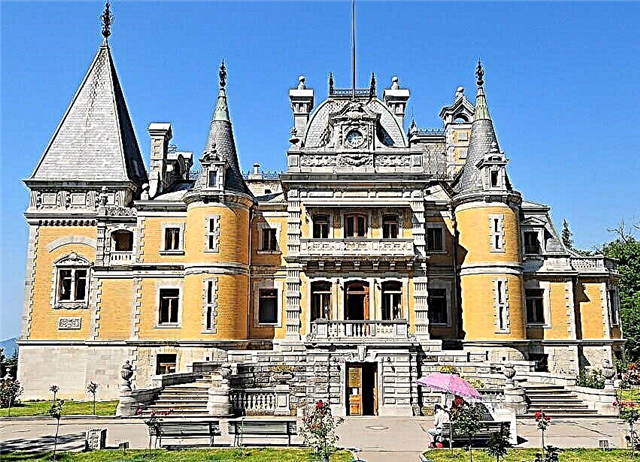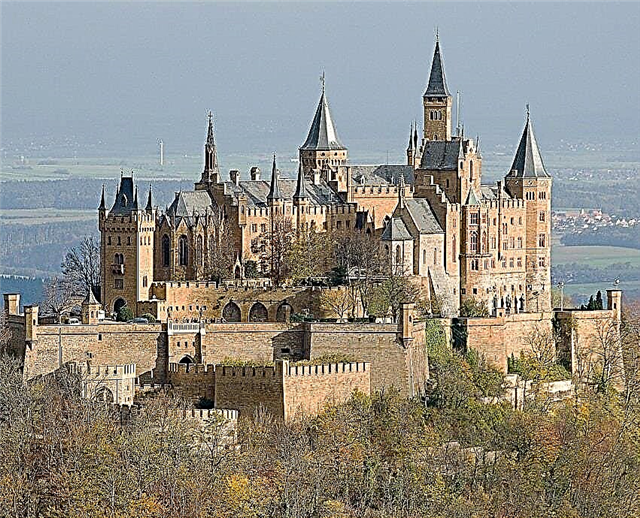Russians began to wash and heal themselves with the help of steam in time immemorial. The name "bath" is a word of very complex origin, its etymology is raised from ancient Greek and Latin to the Proto-Slavic language. Give only wood, a stove and water, and the Russians will immediately build a bathhouse in the place where they are going to stay for a more or less long period. Baths were and are being built both in the hot southern regions and in the harsh northern regions - cleanliness and good health must be maintained everywhere.
It is characteristic that the Russian bathhouse and the rituals of using it were not influenced by either political upheavals or technical development. All the same, firewood is put into a simple stove, water or a decoction of herbs is still poured onto the stove, brooms are still whistling in the steam room, all the same in the bath, everyone becomes equal. History seems to freeze in the bathhouse ...

1. It is believed that the first steam bath was described by Herodotus. In his description, the bathhouse looks like a hut with a vessel with water inside. Hot stones are thrown into the vessel, steam is formed, in which they steam.
2. The ancient Greeks and Romans knew a lot about baths. He built them not only for cleanliness and health. The baths simultaneously served as a club, gym, library and catering establishments.

3. The Russian stove was also the first Russian bath. Ash was removed from the furnace, the man was pushed into the mouth with a shovel. The damper was closed, the steaming one sprinkled water on the walls of the stove - it turned out a steam room.
4. The phrase "black bath" today looks like an oxymoron, but people left the "black bath" quite clean. The walls of the bathhouse were black with soot and smoke - the stove was heated without a chimney. Having heated the stove, the bath was ventilated and washed, and only then they began to steam, sprinkling the stones.

5. "Black" and "white" is not a way to heat the same bath. This is the characteristic of the baths themselves - with and without chimneys. Moreover, there is an opinion that the steam in the smoke sauna is much more fragrant and useful.
6. Regardless of the method of heating, the three main elements of the Russian bath are the steam room itself, the stove with a stove, on which water is splashed, and the dressing room.
7. Since ancient times, Saturday has traditionally been considered a bath day, not because the working week ends. It's just that on Sunday morning you need to go to church clean.
8. There are steam baths in many countries and cultures, but the broom is used only in the Russian bath. Frightening at first glance, the procedure perfectly removes toxins from the body and has a good effect on the skin and the musculoskeletal system.

9. The bathhouse was placed in the backyard not out of any ethical or superstitious motives - for reasons of fire safety. Fires scourged wooden towns and villages.
10. "Soap" is mentioned in Russian manuscripts already in the 10th century. Moreover, they often write about them, but without specifics, which suggests that baths were already commonplace at that time. The clause of the agreement between the Prophetic Oleg and the Byzantines also speaks of this. According to this clause, Russians living and coming to Constantinople should be able to wash themselves in their own bath whenever they want. And in the fairy tale, Ivanushka immediately demanded that Baba Yaga take a steam bath in a bathhouse.
11. The first similar hospitals in Russia appeared at the monastery baths. The monks, who already knew from the Greek books about the benefits of baths, healed in them the "not powerful" - that is how the sick were called then.
12. Foreigners who have visited Russia at different times have written a lot of "cranberries" about the country - unverified, inaccurate or openly false information. However, even the most outspoken spiteful critics did not leave bad reviews about the Russian bath.
13. The only complaint of foreigners to the Russian bath was the joint visit by women and men. Both the church and the secular authorities, in particular, Catherine II, fought against this, but this struggle did not have much success, except that in large cities, men and women were divided.
14. The first brick bathhouse was built in 1090 in Pereslavl. In those years, the idea was not spread - the tree was cheaper and more affordable. Moreover, they did not know the wood finish then, but what is a Russian bath without the aroma of wood? And although wooden materials are now available for finishing from any wood, the wooden frame remains the preferred form of the Russian bath.
15. The bathhouse is firmly inscribed in the Russian cultural code. Travelers and warriors were greeted with a bathhouse; it was visited on the eve of holidays. Childbirth ("How was born again") was also taken in the bathhouse - there is no cleaner place in a peasant house. On the eve of the wedding, the future mother-in-law always went to the bathhouse with the bride - to tie up a closer acquaintance and to make an unofficial medical examination.
16. They believed that the bath cleanses from all sins, including those of the flesh. A visit to the bathhouse was mandatory after the first wedding night and any sexual intercourse. It is clear that the last requirement was difficult to fulfill - the bathhouse was heated only once a week. Therefore, on weekdays, the people with a grin looked at those who did not dare to enter the church, thereby confessing their sin.
17. And even more so, they went to the bathhouse for any diseases associated with colds. In the bath, they cured a runny nose and cough, aching bones and joint diseases.
18. Russian barbarians brought the knowledge about the bath to highly civilized refined Europe at the beginning of the 18th century. Peter the Great set up baths wherever he made long stops. The Europeans, who at that time invented more and more perfect models of wastelands and wizards, all the best perfumes for masking the smell of sweat and feces, and breeding dog breeds that were more and more appropriate for human lice, were shocked. The emperor, together with ordinary soldiers, first built a bathhouse on the banks of the Seine, and then dropped his dignity, steaming with commoners and wallowing with them in the water.
19. Peter I and his associates are known for coming up with a lot of new taxes, now seemingly exotic. But in St. Petersburg, the construction of baths was exempt from taxes.
20. There were many public baths in Russian cities, for every taste and budget. In Moscow, already in the 19th century, there were more than 70 of them, and there were still 1,500 private baths. Bath brooms were a serious business - they were procured in hundreds of villages. The bather's profession was highly respected and lucrative. In addition to the actual bath procedures, vapers knew how to cut off calluses, open blood and pull out teeth.

The famous Sandunovsky baths were not very similar to the baths









